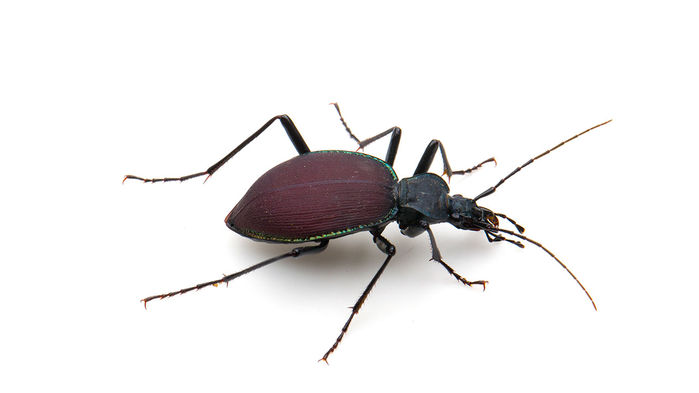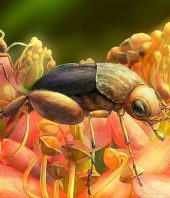If you’re afraid of giant insects, climate change has a silver lining for you. A new study shows that as temperatures have increased over the past century, the world’s biggest beetles may have been shrinking, some downsizing by as much as 20% in 45 years.
This new work “is a powerful demonstration of how climate change is influencing this group of beetles,” says Rhonda Snook, an evolutionary biologist at Stockholm University who was not involved in the study. She and others think that climate change may affect the dynamics of entire ecosystems, including who preys on whom and how many offspring certain animals sire. “If the size of cold-blooded animals is changing around the world, we can expect it will have consequences,” adds Alan Ronan Baudron, a fish biologist at the University of Aberdeen in the United Kingdom, also not involved with the work.
The study began with a deep dive into the scientific literature. Michelle Tseng, an evolutionary ecologist at the University of British Columbia in Vancouver, Canada, and her undergraduate students combed through all the articles they could find, looking for laboratory studies of temperature effects on insects. They found 19 that indicated at least 22 beetle species shrank when raised in warmer than normal temperatures. The ground beetles, which in include tiger beetles and beetles that eat millipedes, shrank 1% of their body weight for every 1°C increase in rearing temperature.
To see whether this pattern held true in the wild, the team made use of the university’s 600,000-specimen insect collection, which included thousands of bugs collected locally since the late 1800s. To save wear and tear on the specimens themselves, the researchers took photographs of more than 6500 beetles from the eight species with the most extensive records. They focused on the length of the insects’ hard wing cover, the so-called elytra, which is a good proxy for overall size. The team also looked at climate records to determine trends in rainfall and other factors besides temperature.
Five of the eight species have shrunk over the past century, Tseng and her students report today in the Journal of Animal Ecology. “We were surprised,” Tseng says. She had thought that changes in the availability of food and the presence of predators would have such a strong influence on the size of the beetles that her team would not see any trends when comparing just their size and climate change. But they did, especially after they sorted the beetles into size categories. The four largest species of beetles, including the snail-killer carabid Scaphinotus angusticollis, shrank 20% in the past 45 years, they report. In contrast, smaller beetles were unaffected or have even slightly increased in size.
Though these changes may seem small, they can have big impacts on the ecosystem, Tseng says. Smaller bees collect less pollen, smaller dung beetles clear less dung, and smaller tortoise beetles consume fewer weeds, for example. But the ultimate outcome of such tweaks to the ecosystem is still unclear, Baudron says.
Wolf Blanckenhorn, an evolutionary ecologist at the University of Zurich in Switzerland, is cautious about the new findings. He’s also seen shrinkage in the dung beetles he’s studied, but he points out that it hasn’t yet been proved whether the warming temperatures are the actual cause. There may be unrecognized changes in the type of food available that’s having an effect, for example. “It may be plausibly argued at best,” he says.
Baudron, however, is convinced. His studies of fish in the North Sea have documented that some species there are getting smaller as the climate is warming. Several other studies have documented similar shrinkage in aquatic animals, he says. “We think [the trend] is universal.”
Baudron says fish are shrinking because warmer temperatures lower the concentration of oxygen in the water and, at the same time, cause fish to have burn energy faster. Larger species, in particular, have a hard time getting enough oxygen to sustain this revved-up metabolism; as a result, they may mature at a smaller size. But neither he nor Tseng is convinced that decreased oxygen can explain the shrinkage in the beetles.
Source: AAAS, Full Article






